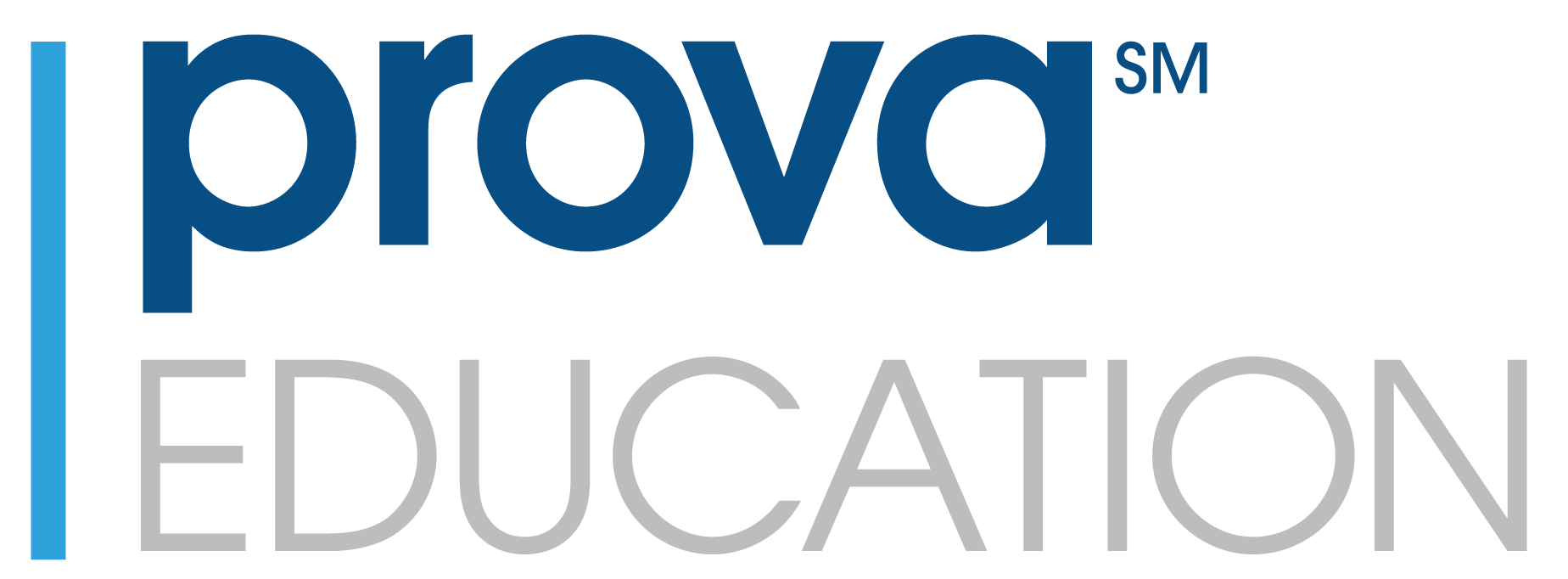Announcer:
Welcome to CME on ReachMD. This activity, entitled “Treatment Options for Invasive Fungal Infections: Why They Don't Always Work” is provided by Prova Education.
Prior to beginning the activity, please be sure to review the faculty and commercial support disclosure statements as well as the learning objectives.
Dr. Patterson:
Are fungi winning the battle? And do we even stand a chance against them in this era of advanced immunosuppressive therapies? We now have several classes of antifungal drugs available to us, multiple for frontline therapy. But are we even making a dent in the morbidity and mortality impacts of invasive infections?
This is CME on ReachMD, and we're going to explore how we can solve the problem of why our current fungal treatment options don't always work and take a brief glimpse into the future. I'm Dr. Tom Patterson, and I'm Professor of Medicine and Chief of Infectious Diseases at UT Health San Antonio.
Dr. Thompson:
And I'm Dr. G.R. Thompson, Professor of Medicine and Fellowship Program Director at University of California Davis Medical Center.
Dr. Patterson:
Treatment failure or clinical progression of infection despite treatment with antifungal therapy is a major reason for poor outcomes. And there are multiple reasons why treatments fail. G.R., can you review those to give us some context for our discussion?
Dr. Thompson:
Absolutely. There's a lot of reasons that patients fail treatment. I think the most common is probably misdiagnosis. We tend to recognize a lot of these pulmonary mold infections by syndrome rather than a culture-proven or histologic-proven diagnosis. And I think there's a lot of mimickers in this immunosuppressed population, certainly Pseudomonas, Nocardia, even staph infections can look very similar to mold infections. Underlying malignancy can certainly mimic some of the radiographic findings of invasive mold infections. So I think misdiagnosis is one of the hallmarks.
And even when we do have a mold infection, sometimes it’s a resistant mold, particularly a patient on prophylaxis, they're more likely to have a resistant mold. So you may have a mismatch of the fungus you think you're treating versus the drug you've matched up. These patients are going to be on long courses of antifungal therapy. There's certainly toxicity associated with these. So I think that's just essential to ensure you've cinched up the diagnosis early.
The other problem is really low drug concentrations. All of the azole’s certainly, it's recommended you do therapeutic drug monitoring. Even with advances, you know, when we moved from posaconazole solution to the delayed-release formulation, we did see higher drug levels, but still even with posaconazole tablets, 10% of patients are going to have levels below what we shoot for with prophylaxis. Similar data when voriconazole is used as prophylaxis or treatment and isavuconazole as well. So low drug concentrations are clearly an issue.
Drug toxicities gets at the patient's ability to tolerate. So once we know the diagnosis and put them on appropriate therapy, a significant number of these patients are just going to not tolerate first-line or even second-line therapy, so that's certainly a problem and leads to failure.
There's drug-drug interactions with use of all of the azoles and numerous of the chemotherapy agents.
And then the resistant organisms. These have emerged as a significant problem in mycology, not only amongst molds but also yeasts. Drug-resistant Candida species, Candida auris has been a big problem. Fluconazole-resistant Candida parapsilosis has emerged at multiple places around the world.
Those are the most common reasons for failure. And it really takes a nuanced approach to the care of these patients.
Dr. Patterson:
Thanks, G.R., I agree with you. It's critical to make sure you have the right diagnosis, even if you had established it before. There are a number of different considerations that the clinician has to entertain. As you said, an individualized, nuanced approach for each patient has to be considered because of the reasons that you outlined.
Dr. Thompson:
In the current era, how can we better optimize the therapies we have? And how far can this take us in improving outcomes?
Dr. Patterson:
That’s also a really important question. You've outlined it in the reasons for failure. But certainly, now that we do have a number of different antifungal drugs to choose from and even more that are coming down the pipeline, that’s it's going to be important to recognize toxicities when they occur, and if the drugs aren't being tolerated – because there may be other options that the clinician has to consider. Obviously, we have to think about the different specter of activity that these agents are going to have because it's not going to be the same as 1 drug covers every pathogen. Just like we see with bacterial agents, we’re really having to get away from sort of old way of thinking of amphotericin, polyenes covering most agents. Obviously, there were a few agents that weren't covered classically by amphotericin. But again, an individualized approach, thinking what drug is most appropriate for the infection you're likely to be treating.
Obviously, drug-drug interactions are also important. So it's going to be really key to involve your infectious disease pharmacist to help make decisions on drug-drug interactions and whether 1 agent might be preferred to others.
And then also route of administration. Fortunately, for some of the new drugs that are coming and even the more recent drugs that have been introduced, we have IV and/or oral availability. Some of these really resistant infections are going to require long-term therapy. An oral drug is really going to be very, very useful. And in fact, even for more acute disease, for an agent that has good and predictable bioavailability, oral therapy may be an appropriate option as well.
Dr. Thompson:
To add to that, I think that in this era of stewardship with antimicrobials, antifungal use is going to need to follow that same pathway and really be careful about the use of these agents. Some of the new antifungals in the pipeline that you mentioned have sort of a narrow spectrum. So understanding that fully is going to be key and not overusing those or we're going to see more resistance develop.
Dr. Patterson:
It's been more than 20 years since a new antifungal class was introduced to the market. How do you explain that?
Dr. Thompson:
The development of antifungals is met with a number of different challenges. Fungi are eukaryotic, just like we are. So toxicity is going to be fairly overlapping. These agents are designed to kill fungi but by a number of different mechanisms. And we share some of those same metabolic pathways or at least have a gene ortholog, so we're going to have toxicity with those same antifungals. And so that makes design from a toxicity standpoint pretty difficult.
Fungi are also pretty good at outcompeting a host and other organisms. They survive in the environment, certainly, with relatively little defense put up by decaying vegetative matter. They've basically acquired a number of proteases and things that break down tissue. So they're able to surround themself with dead tissue, even in the host’s lung. That's one of the ways they're really good at protecting themselves.
There's a thought that fungi have learned over time to escape amoeba in the environment, and that's allowed them to survive inside host neutrophils, which are functionally fairly similar to amoeba in the environment. So those are 2 different mechanisms that have made fungi increase their virulence, but also have compounded the difficulty in finding drugs to kill these.
Dr. Patterson:
For those of you just tuning in, you're listening to CME on ReachMD. I'm Dr. Tom Patterson, and here today with me is Dr. G.R. Thompson. We're discussing why our current therapies don't always work for our patients with invasive fungal infections and what newer therapies may bring to the table.
Dr. Thompson:
We've established that treatments available to us don't always work and we know a good bit about why, so we agree that we have a serious unmet need. The good news is that the antifungal pipeline is active. What are investigators up to?
Dr. Patterson:
You're right on target. I mean, it's a super exciting time to be in clinical mycology. We've seen a number of compounds enter the clinical trial phase in recent years, and there are several that I'll mention. One is a triterpenoid. One of those drugs is called ibrexafungerp. It's approved already for use and vaginal candidiasis but has the potential to treat other yeast infections, perhaps even molds or endemic fungi, with a spectrum likely to be similar to echinocandins.
Another drug class is related to Gwt1 inhibition which affects cell wall adhesion. One of the drugs in that class is a prodrug called fosmanogepix. That's undergoing development with preliminary early phase data that suggests significant activity against a number of fungi, including Candida glabrata and perhaps even coccidiomycosis, other endemic fungi, perhaps even Mucorales.
Another agent in late-phase development is an orotomide. That drug class is new. It targets an essential enzyme. The first in class of that antifungal is Olorofim and has shown significant activity against rare molds, some which, frankly, have had very little effective therapy available to treat those infections like Pseudallescheria or Scedosporium. But as you know, even very effective against endemic fungi like Coccidioides, which can be a terrible clinical problem.
For the echinocandins, we've had that class around for a number of years. But a new agent in that class is a long-acting echinocandin that could be given weekly, and then perhaps even in a couple of doses, even for systemic infection. Rezafungin is the first of those long-acting echinocandins.
For polyenes, drugs that have been around for more than 50 years, those drugs, you wouldn't think we would see much in development, but there are new formulations that are receiving significant attention, including nanoparticles that allow oral administration. For systemic delivery, classically amphotericin, the polyene, could only be given intravenously for long-term therapy. Oral administration could really be useful, especially in areas of the world where IV therapy is difficult to administer.
So all these agents that I mentioned have potential. They're all in clinical trials, so they're not approved for these systemic indications that I've mentioned.
Dr. Thompson:
Thanks for that great overview. I think the thing I'm most excited about with these new compounds is how many have an oral formulation. A lot of our patients need these for therapy durations that are weeks to months, and so having an oral medication they can take outside of the hospital setting is a pretty big advantage over currently available agents, in addition to their extended spectrum of activities. So lots to be excited about here.
Dr. Patterson:
Thanks, G.R. As you know, it's been estimated that in some settings, particularly in critical care units, that up to half of the prescriptions for antifungal drugs are not really necessary or otherwise inappropriately given. You've mentioned stewardship briefly, but clearly giving antifungals to patients who don't really need it puts patients at greater risk for drug toxicities, drug interactions. It also increases the risk for selection of resistant fungi. Obviously, it increases cost unnecessarily. So all of those are really important considerations. But why do you think this happens? And what advice do you have for clinicians both today and in the future if these new antifungal therapies are approved for clinical use?
Dr. Thompson:
I think this happens for a couple of different reasons. I think that mycology is a bit of a black box to a lot of people in medicine still. They don't have a real good grasp on the different organisms and the different syndromes that the patients present with, so they're not quite sure when to use these different agents, if they cover the offending pathogen that they're concerned about. And then they're not quite sure how long to treat the patient and may overtreat them. Hospitals all have their own stewardship service now, but antifungal therapy has been a bit neglected in this field and really needs to be a key component of all stewardship efforts for the reasons you outlined. We don't want to overuse these drugs for concerns of toxicity, for development of resistance, and certainly for costs as well. So having a stewardship program that includes this as a key component is essential so that these drugs can maintain their utility for a long time.
Dr. Patterson:
Thanks, I completely agree that antifungal stewardship is becoming a really important aspect of antifungal drug delivery, and one that I think we'll see grow in importance with the addition of these newer agents.
Well, this has really been a great conversation, but before we wrap up, G.R., what's your one take-home message for our audience?
Dr. Thompson:
The one thing I would try to remind people is do your best to make sure you have the correct diagnosis so that you can put them on the right antifungal therapy.
Dr. Patterson:
And I'll just add to that, that these new antifungal agents offer an important and very exciting advance in the treatment of patients, especially with extensive immunosuppression. But as you say, it's going to be more and more important for clinicians to recognize which ones of these agents should be used in individual patients and in specific settings.
G.R., I've enjoyed discussing this important topic and timely topic with you today, but it's time to wrap up. Thank you for sharing your expertise and your valuable insights.
Dr. Thompson:
Yeah, thanks so much, Tom.
Announcer:
You have been listening to CME on ReachMD. This activity is provided by Prova Education.
To receive your free CME credit, or to download this activity, go to ReachMD.com/Prova. Thank you for listening.

 In support of improving patient care, Global Learning Collaborative (GLC) is jointly accredited by the Accreditation Council for Continuing Medical Education (ACCME), the Accreditation Council for Pharmacy Education (ACPE), and the American Nurses Credentialing Center (ANCC) to provide continuing education for the healthcare team.
In support of improving patient care, Global Learning Collaborative (GLC) is jointly accredited by the Accreditation Council for Continuing Medical Education (ACCME), the Accreditation Council for Pharmacy Education (ACPE), and the American Nurses Credentialing Center (ANCC) to provide continuing education for the healthcare team.



Facebook Comments